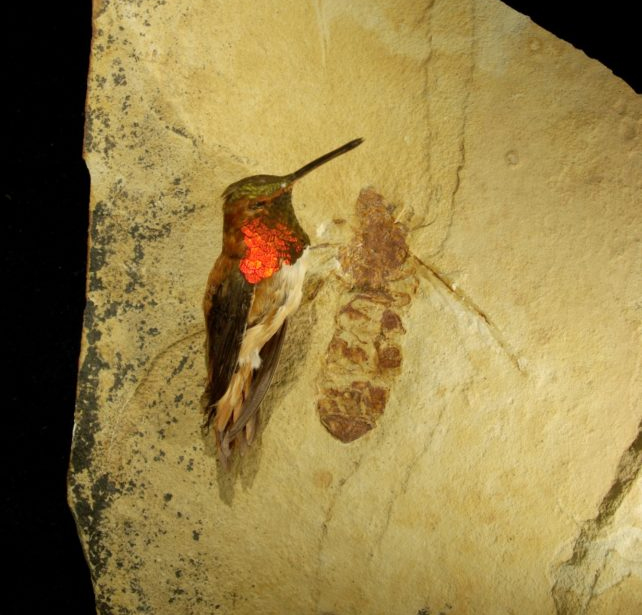maximus otter
Recovering policeman
- Joined
- Aug 9, 2001
- Messages
- 13,975
Ants Making Strange Petal Circles Around Dead Bees
A post on Twitter showing circular arrangements of flower petals placed around several dead bees by ants recently went viral. With an apparent “bee funeral” taking place, it’s easy to see why, but there are actually several reasons why ants may process dead insects like this – and unfortunately, none of them pertain to giving the bees a dignified send-off.

Ants live in complex colonies and use a variety of pheromones to communicate. This can be for a walking trail, to alert other ants of danger, or even just to let them know they’ve died and everyone else should probably watch out for dying, too.
It figures, then, that they’d be sensitive to the chemical signaling of other animals. In the case of these dead bees, it’s not known why they died – but their corpses are likely sending the ants some kind of message, and so it’s possible their floristry is a response to this.
If the bees represent a few sizable meals for these ants, the decaying plant material may act as a mask to keep their feast hidden from competing scavengers who may be on the prowl for a free lunch. The arrangement would therefore be less of a funerary practice and more like hiding takeout leftovers as a UFO (unidentified foiled object) in your dorm fridge to stop prying roommates from eating them.
Alternatively, the signals emitting from the bees may have signaled to the ants that they need to tidy up a bit. Ants are famously good cleaners and will practice something known as necrophoresis to keep their colonies healthy.
Squashed ants will sometimes attract more ants (one of many reasons why you shouldn’t squish them) because their bodies emit oleic acid. As an adaptation that lessens the spread of pathogens, necrophoresis sees the ants gather their smelly dead and carry them away to a dedicated tomb. Some colonies even have specialized undertaker ants for the job.
It’s possible that the bees in this video were collected through a similar mechanism, and that the mask of a floral blanket could reduce the likelihood of the decomposing heap attracting unwanted attention.
https://apple.news/A1Jv7J-aSSvqlhWYRaTqdEA
maximus otter
A post on Twitter showing circular arrangements of flower petals placed around several dead bees by ants recently went viral. With an apparent “bee funeral” taking place, it’s easy to see why, but there are actually several reasons why ants may process dead insects like this – and unfortunately, none of them pertain to giving the bees a dignified send-off.

Ants live in complex colonies and use a variety of pheromones to communicate. This can be for a walking trail, to alert other ants of danger, or even just to let them know they’ve died and everyone else should probably watch out for dying, too.
It figures, then, that they’d be sensitive to the chemical signaling of other animals. In the case of these dead bees, it’s not known why they died – but their corpses are likely sending the ants some kind of message, and so it’s possible their floristry is a response to this.
If the bees represent a few sizable meals for these ants, the decaying plant material may act as a mask to keep their feast hidden from competing scavengers who may be on the prowl for a free lunch. The arrangement would therefore be less of a funerary practice and more like hiding takeout leftovers as a UFO (unidentified foiled object) in your dorm fridge to stop prying roommates from eating them.
Alternatively, the signals emitting from the bees may have signaled to the ants that they need to tidy up a bit. Ants are famously good cleaners and will practice something known as necrophoresis to keep their colonies healthy.
Squashed ants will sometimes attract more ants (one of many reasons why you shouldn’t squish them) because their bodies emit oleic acid. As an adaptation that lessens the spread of pathogens, necrophoresis sees the ants gather their smelly dead and carry them away to a dedicated tomb. Some colonies even have specialized undertaker ants for the job.
It’s possible that the bees in this video were collected through a similar mechanism, and that the mask of a floral blanket could reduce the likelihood of the decomposing heap attracting unwanted attention.
https://apple.news/A1Jv7J-aSSvqlhWYRaTqdEA
maximus otter


